Updated Guidelines for AI Inventions
May 20, 2024
By: Michael R. McGurk and Rae Zhang, Ph.D.
On March 1, 2024, updated Guidelines for examining AI inventions at the European Patent Office (EPO) came into effect. These updated guidelines can be found in the official “Guidelines for Examination in the European Patent Office,” which contains instructions for Applicants seeking to obtain a European patent. With a granted European patent, Applicants can further seek protection in both member and non-member countries of the European Patent Organization.
Firstly, Section G-II, 3.3.1 of the Guidelines provides further detail regarding the extent of disclosure required by the Applicant to establish ‘technical effect’ and therefore inventive step for AI and machine learning inventions. According to Section 3.3.1, “The technical effect that a machine learning algorithm achieves may be readily apparent or established by explanations, mathematical proof, experimental data or the like. While mere allegations are not enough, comprehensive proof is not required either. If the technical effect is dependent on particular characteristics of the training dataset used, those characteristics that are required to reproduce the technical effect must be disclosed unless the skilled person can determine them without undue burden using common general knowledge. However, in general, there is no need to disclose the specific training dataset itself (see also F‑III, 3 and G‑VII, 5.2).”
Datasets are continuously evolving in both size and complexity and are crucial in determining the quality of a machine learning model/framework. The updated Guidelines indicate that specific dataset characteristics (e.g., features, dimensionality, etc.) essential to the inventiveness of a machine learning algorithm should be disclosed, although such a disclosure may not be necessary if the characteristics can be readily reproduced by a skilled person.
Secondly, Section F-III, 3 of the Guidelines has been updated to provide an example of how AI disclosures can avoid an Article 83 European Patent Convention (EPC) rejection. The example states that a disclosure in which it is insufficiently clear and complete for a person skilled in the art to carry out the invention may occur “if the mathematical methods and the training datasets are disclosed in insufficient detail to reproduce the technical effect over the whole range claimed. Such a lack of detail may result in a disclosure that is more like an invitation to a research programme (see also G‑II, 3.3.1).”
Therefore, while the disclosure of a dataset in its entirety is not required and is often impractical in patent applications, key attributes of the dataset should be adequately described in the application, especially if the usage of the dataset results in an unexpected and/or significant improvement of the AI invention over what is currently known in the art.
Further, it is often the case that Applicants are seeking to protect the use of existing AI technologies in unexplored areas, rather than the actual machine learning algorithm (e.g., system of equations with parameter weights) itself. Applicants may be seeking to protect new methods or frameworks incorporating AI technologies. Based on what is known in the art, mathematical concepts or frameworks underlying well-known machine learning architecture such as transformers need not be disclosed. What should be disclosed, for example, are the workflows governing the integration of various data structures and computational models, as well as the performance and/or validation of these workflows in the relevant areas of interest. These workflows may be in the form of logical schematics, flowcharts, architectures, and system environments that the AI inventions may be implemented in.
Applicants seeking to safeguard their AI inventions in the US may find the updated EPO Guidelines a helpful benchmark to follow in addition to the USPTO guidance. As much as possible, care should also be taken into providing well-labeled and descriptive drawings that would enable a skilled artisan to make and use the range of embodiments articulated in the claimed invention in order to fulfill the enablement requirement. At the same time, the detailed description (e.g., training data attributes, descriptive drawings, corresponding narration of the drawings, etc.) must meet the requisite disclosure of the best mode for practicing Applicant's invention according to US Patent law.





